Galileo FS-80 Telescope$65.00 to $80.00
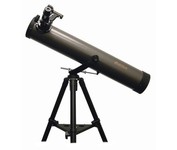
The Galileo FS-80 reflector telescope is a great beginner's reflecting telescope. The large 80mm primary mirror cell collects 33% more light than a 60mm refracting telescope. 1.25 focus housing permits the use of larger higher quality 1.25 eyepieces. Yoke mount makes the telescope easy to manage through altitude / azimuth (Up & Down, Left & Right) movement, and altitude slow motion control rod for precision adjustmentsMinimize
Manufacturer:Galileo Product MPN MPN | FS-80 | Key Features Optical Design | Refractor | Optical Diameter | 80 mm | Focal Length | 800 mm | Mount Type | Altazimuth | Motorized | No | Miscellaneous UPC | 798932000808 |
Tags:galileo, fs-80, telescope,
| Meade ETX-80BB (160 x 80mm) Telescope$227.00 to $300.00
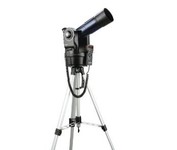
Observe the feather structure of an eagle from 50 yards or study the rings of Saturn from a distance of 800 million miles. Then focus beyond the solar system to the universe of nebulae, remote galaxies and ancient star clusters. It's an adventure of discovery the whole family can enjoy, in the backyard or wherever your travels take you.Minimize
Manufacturer:Meade Product MPN MPN | 08050420 | Key Features Optical Design | Refractor | Optical Diameter | 80 mm | Focal Length | 400 mm | Max Useful Magnification | x 160 | Miscellaneous UPC | 709942990218 |
Tags:meade, etx-80bb, 160, x, 80mm, telescope,
| Bushnell NorthStar 78-8831 (525 x 76mm) Telescope$183.00 to $241.00
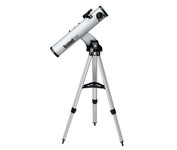
A "talking" high power reflector telescope. Up to 525x magnification and 3-inch reflector mirror. With the touch of a button this talking telescope describes the wonders of the night sky in a real human voice - an interactive and educational way to explore the universe. "Goto" Computerized tracking technology. Red Dot LED finderscope. Remote hand-held control module. Camera adaptable. Quick release tripod. Kinematic mount. Accessory tray. 20,000 Object Onboard Starfinding Computer. 1.25" Format Eyepieces. Barlow Lens. A great starting telescope!Minimize
Manufacturer:Bushnell Product MPN MPN | BUTS788831 | Key Features Optical Design | Newtonians | Optical Diameter | 76 mm | Finderscope | Red-Dot | Focal Length | 700 mm | Max Useful Magnification | x 525 | Mount Type | Altazimuth | Motorized | Yes | Miscellaneous UPC | 029757788825 |
Tags:bushnell, northstar, 78-8831, 525, x, 76mm, telescope,
|
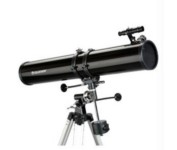
Powerseeker 114 EQ 4.5''/900mm f/8 Newtonian Reflector Telescope with German-Type Equatorial Mount & Tripod
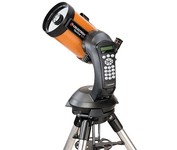
Featuring high-quality Schmidt-Cassegrain optics, the NexStar 5 SE is an ideal telescope for observing and photographing the wonders of space. With a total weight of 28 lbs including the tripod, the ultra portable 5 SE features a precision optical system with 1,250 mm focal length (f/10) standard with our premium StarBright XLT coatings and offers 56% more light gathering power than a 4" model.Minimize
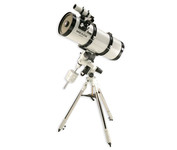
Meade LXD75 SN8-AT UHTC is an 8 inch Schmidt-Newtonian reflector type telescope with 812mm focal length and fast f/4 aperture and Meade Ultra High Transmission Coating, for 20% more image brightness over its non-UHTC sister model.
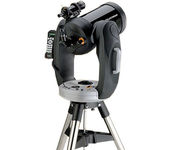
Celestron Professional Computerized (CPC) Series with revolutionary SkyAlign Alignment Technology redefines everything that amateur astronomers are looking for quick and simple alignment, GPS, unsurpassed optical quality, ease of set-up and use






